Abstract
The attachment of a marine Pseudomonas sp. to a variety of surfaces was investigated, and the number of bacteria which became attached was related to the surface charge and degree of hydrophobicity of the substratum. Large numbers of bacteria attached to hydrophobic plastics with little or no surface charge [Teflon, polyethylene, polystyrene, poly(ethylene terephthalate)]; moderate numbers attached to hydrophilic metals with a positive (platinum) or neutral (germanium) surface charge; and very few attached to hydrophilic, negatively charged substrata (glass, mica, oxidized plastics). The results suggest that both electrostatic and hydrophobic interactions are involved in bacterial attachment.
Full text
PDF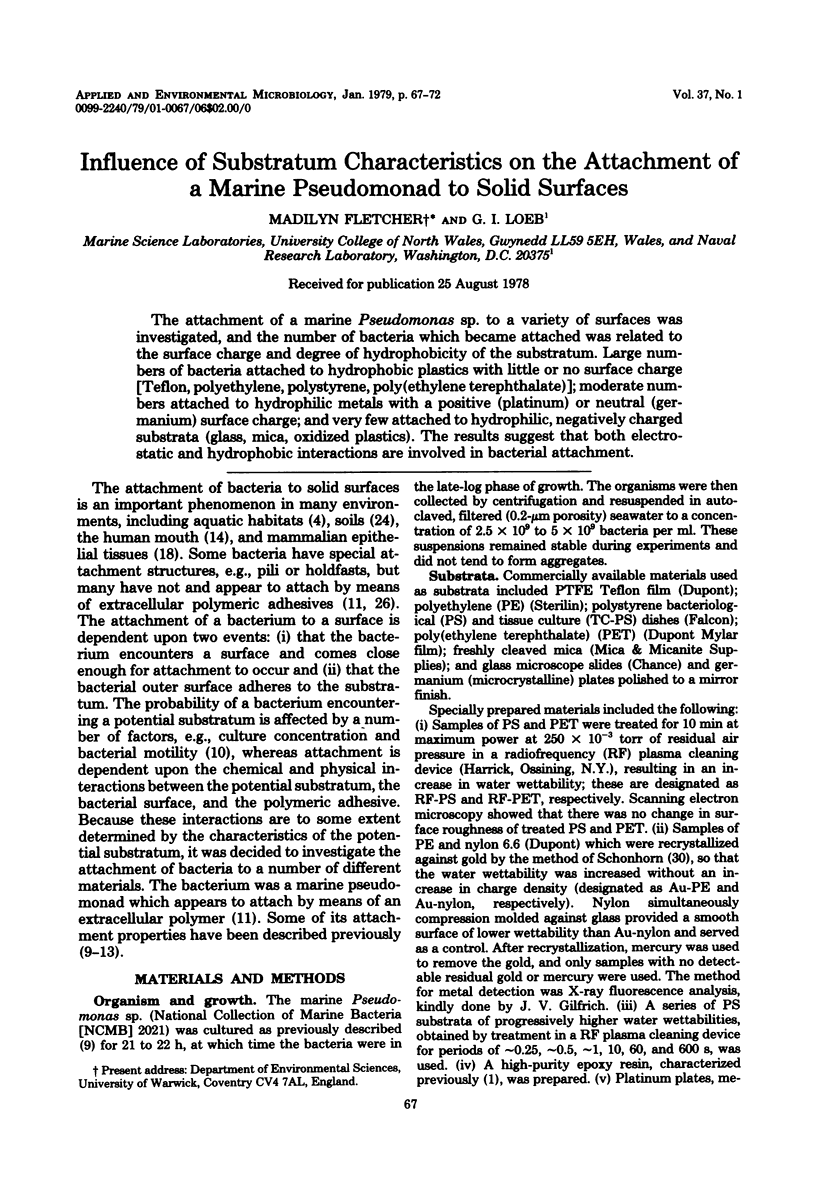
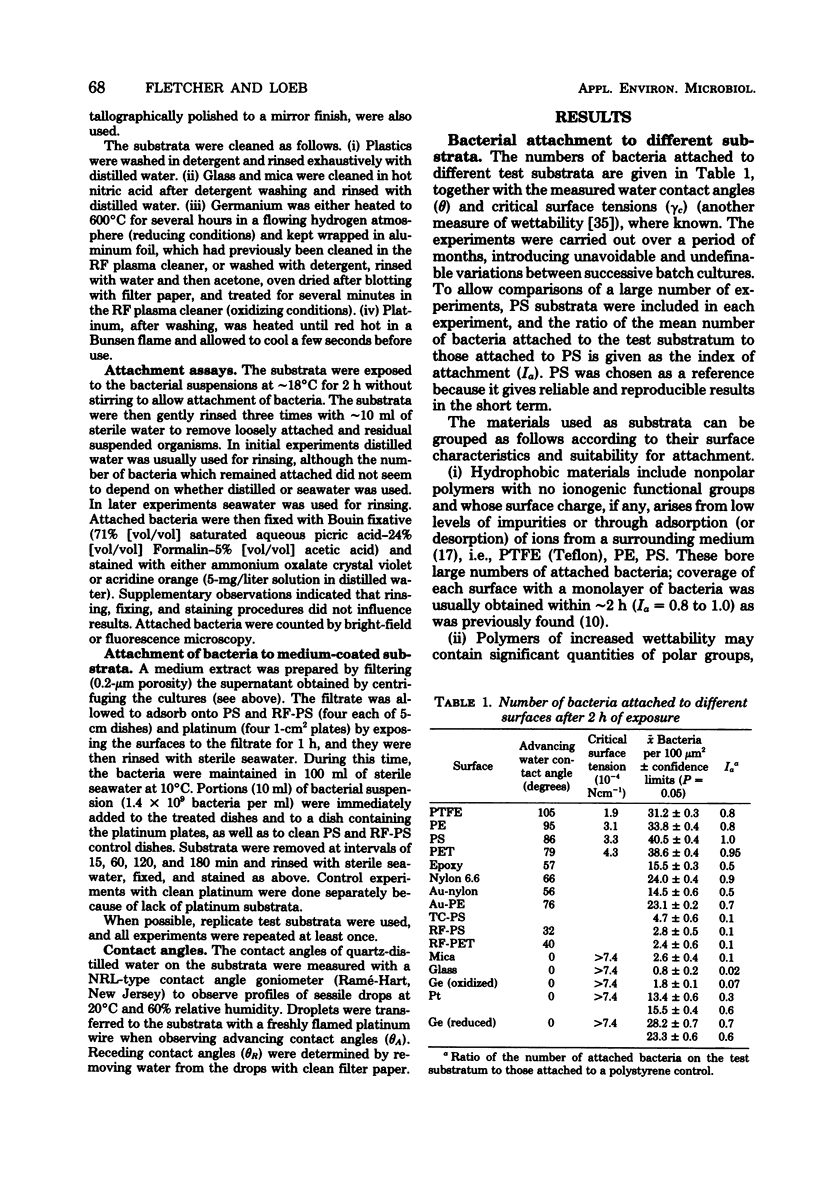
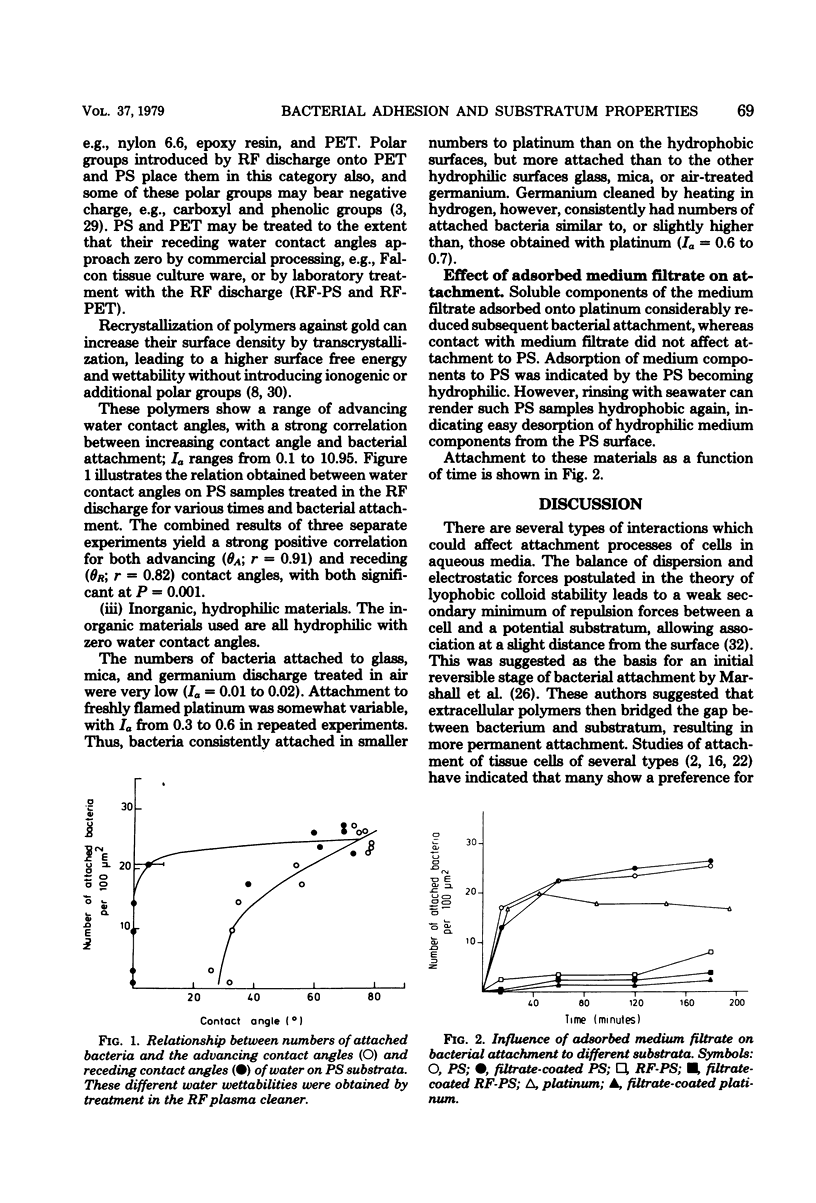
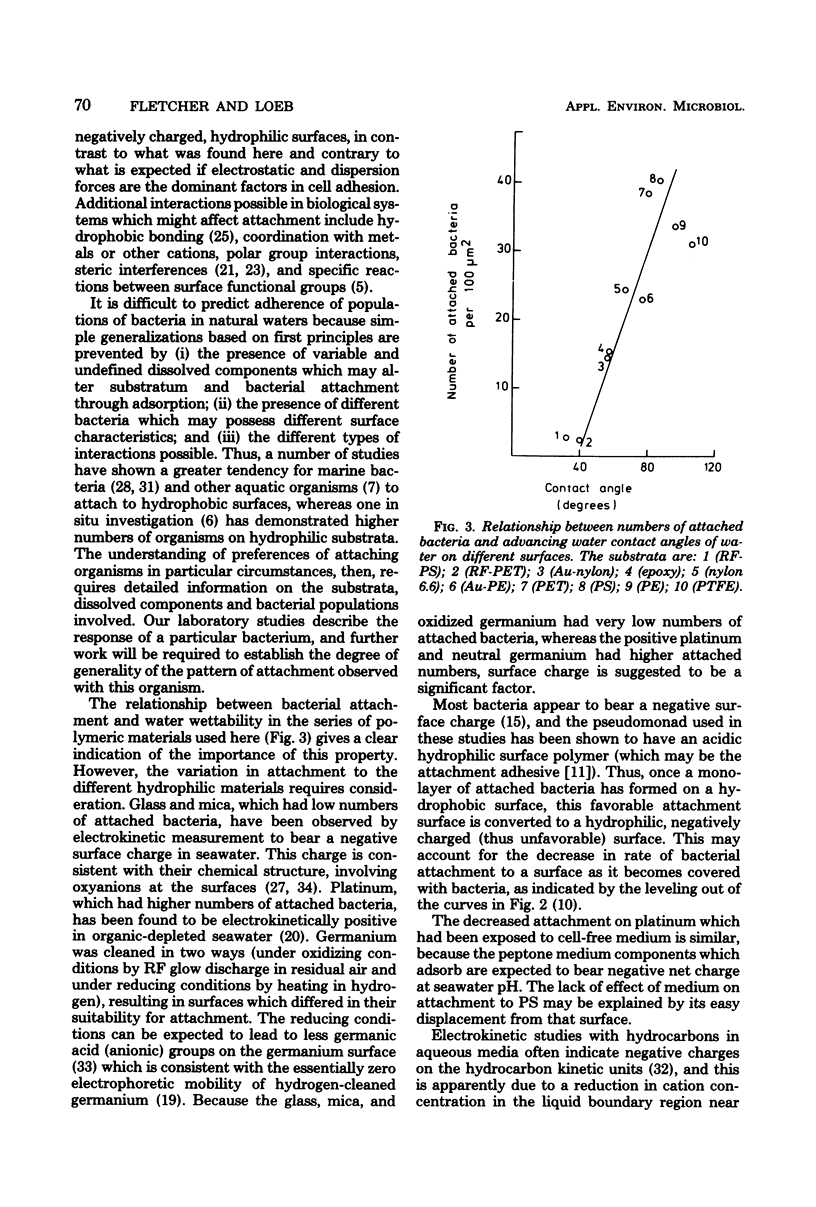
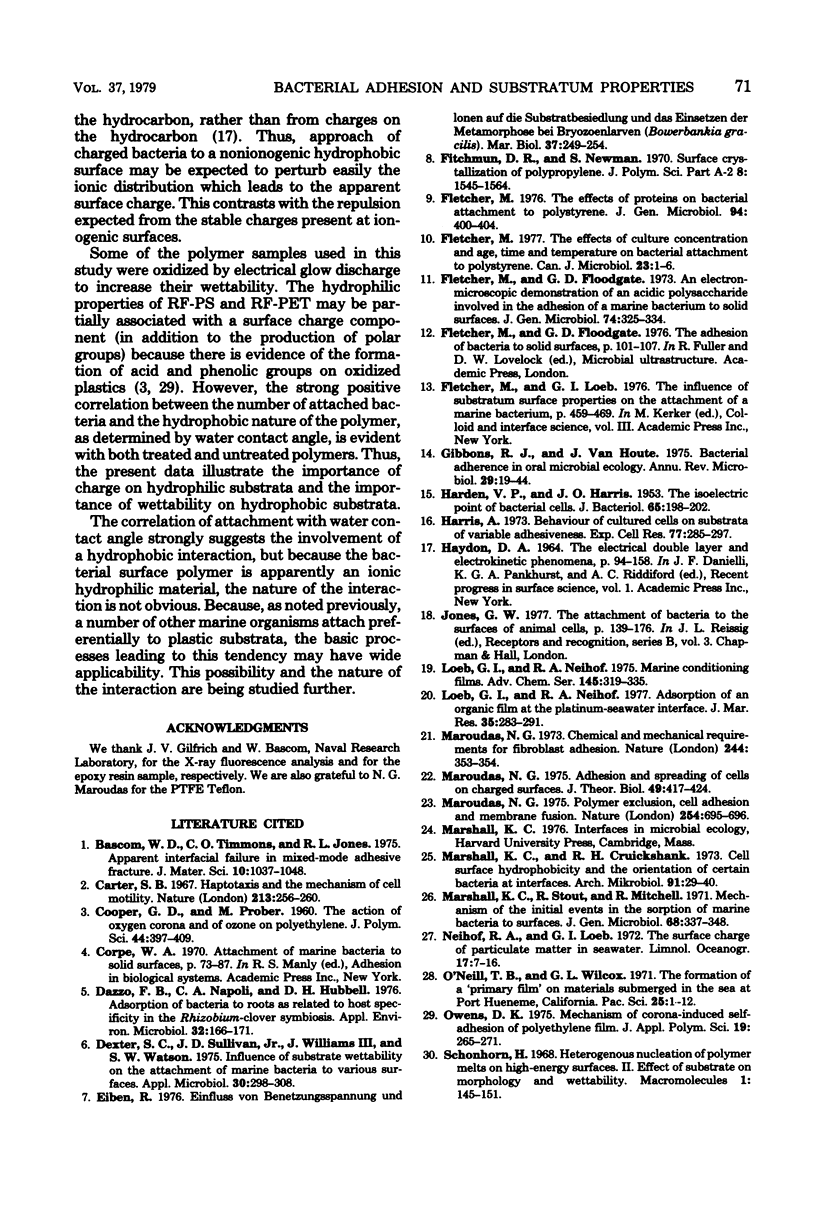
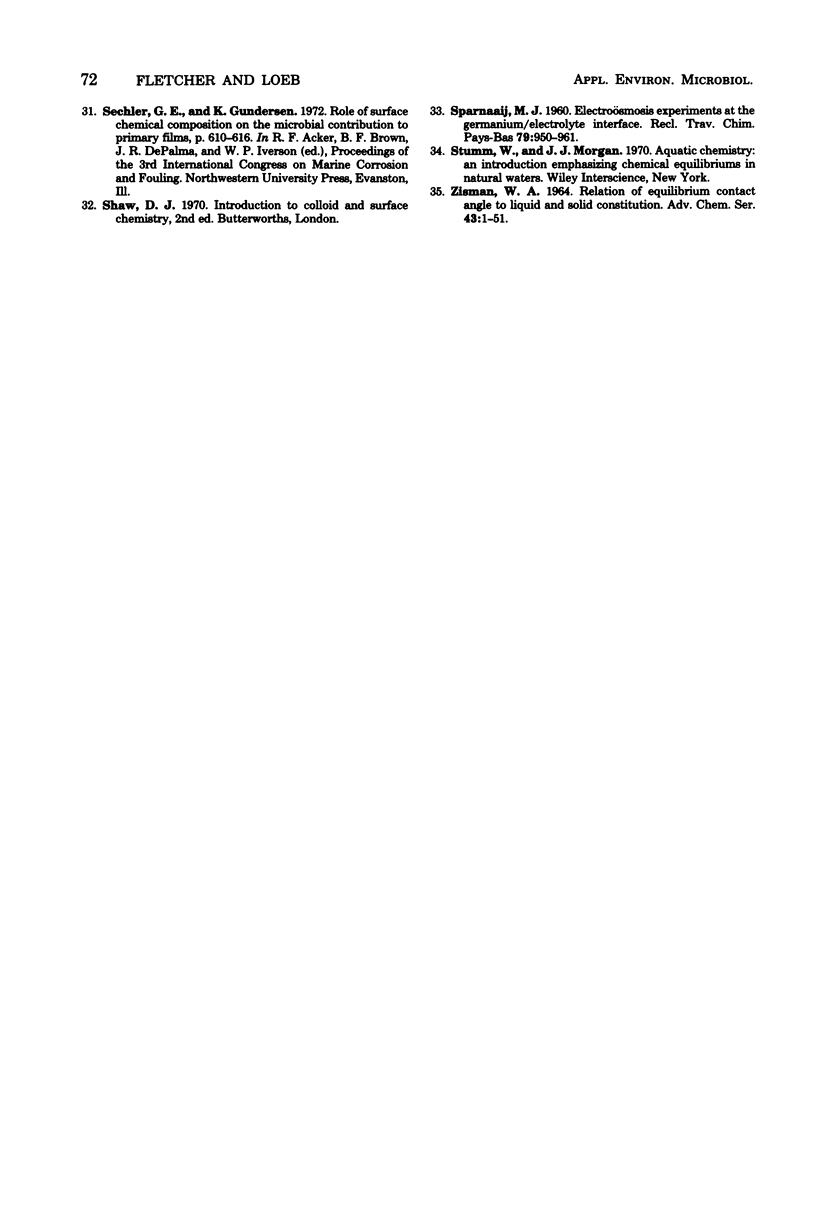
Selected References
These references are in PubMed. This may not be the complete list of references from this article.
- Carter S. B. Haptotaxis and the mechanism of cell motility. Nature. 1967 Jan 21;213(5073):256–260. doi: 10.1038/213256a0. [DOI] [PubMed] [Google Scholar]
- Dazzo F. B., Napoli C. A., Hubbell D. H. Adsorption of bacteria to roots as related to host specificity in the Rhizobium-clover symbiosis. Appl Environ Microbiol. 1976 Jul;32(1):166–171. doi: 10.1128/aem.32.1.166-171.1976. [DOI] [PMC free article] [PubMed] [Google Scholar]
- Dexter S. C., Sullivan J. D., Williams J., Watson S. W. Influence of substrate wettability on the attachment of marine bacteria to various surfaces. Appl Microbiol. 1975 Aug;30(2):298–308. doi: 10.1128/am.30.2.298-308.1975. [DOI] [PMC free article] [PubMed] [Google Scholar]
- Fletcher M. The effects of proteins on bacterial attachment to polystyrene. J Gen Microbiol. 1976 Jun;94(2):400–404. doi: 10.1099/00221287-94-2-400. [DOI] [PubMed] [Google Scholar]
- Gibbons R. J., Houte J. V. Bacterial adherence in oral microbial ecology. Annu Rev Microbiol. 1975;29:19–44. doi: 10.1146/annurev.mi.29.100175.000315. [DOI] [PubMed] [Google Scholar]
- HARDEN V. P., HARRIS J. O. The isoelectric point of bacterial cells. J Bacteriol. 1953 Feb;65(2):198–202. doi: 10.1128/jb.65.2.198-202.1953. [DOI] [PMC free article] [PubMed] [Google Scholar]
- Harris A. Behavior of cultured cells on substrata of variable adhesiveness. Exp Cell Res. 1973 Mar 15;77(1):285–297. doi: 10.1016/0014-4827(73)90579-x. [DOI] [PubMed] [Google Scholar]
- Maroudas N. G. Adhesion and spreading of cells on charged surfaces. J Theor Biol. 1975 Feb;49(2):417–424. doi: 10.1016/0022-5193(75)90182-4. [DOI] [PubMed] [Google Scholar]
- Maroudas N. G. Chemical and mechanical requirements for fibroblast adhesion. Nature. 1973 Aug 10;244(5415):353–354. doi: 10.1038/244353a0. [DOI] [PubMed] [Google Scholar]
- Maroudas N. G. Polymer exclusion, cell adhesion and membrane fusion. Nature. 1975 Apr 24;254(5502):695–696. doi: 10.1038/254695a0. [DOI] [PubMed] [Google Scholar]
- Marshall K. C., Cruickshank R. H. Cell surface hydrophobicity and the orientation of certain bacteria at interfaces. Arch Mikrobiol. 1973 Apr 8;91(1):29–40. doi: 10.1007/BF00409536. [DOI] [PubMed] [Google Scholar]


